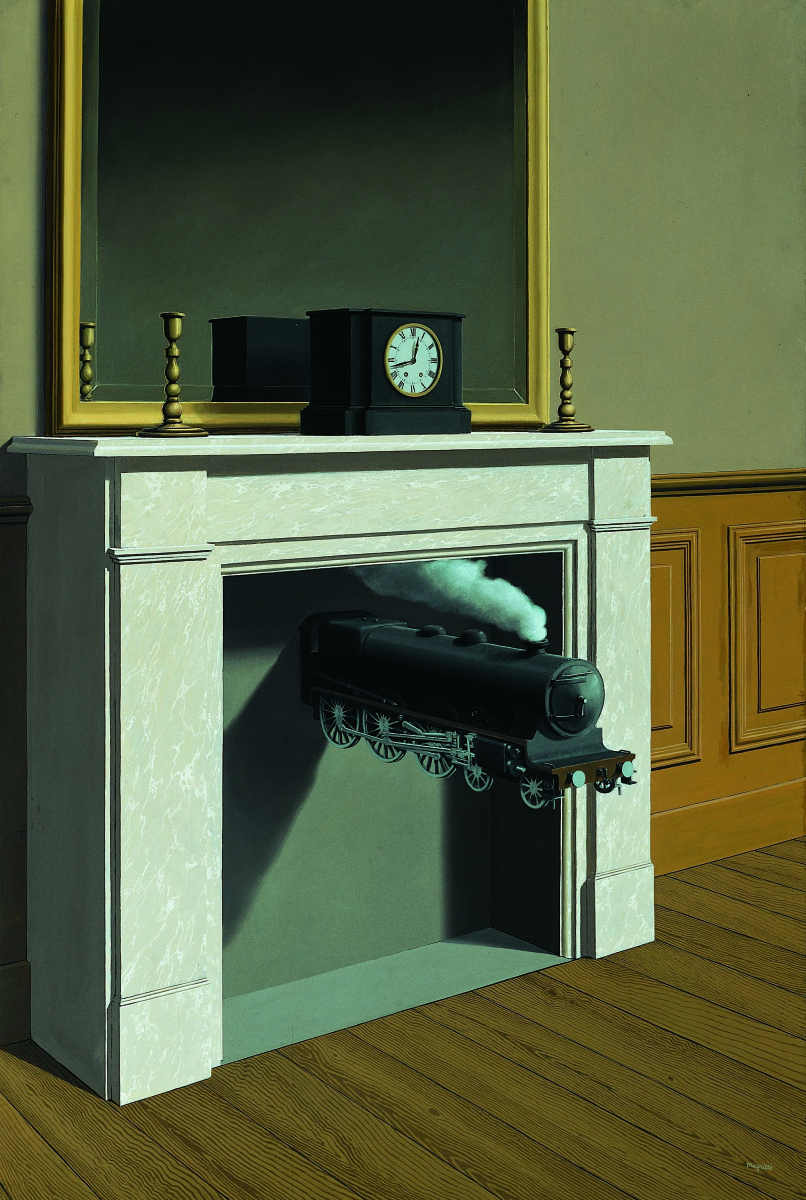Time Transfixed
Description of the artwork «Time Transfixed»
Impressed by the work of René Magritte at the 1936 International Surrealist Exhibition, collector Edward James invited the artist to write canvases for the ballroom of his London home. Then Magritte created "On the threshold of freedom" and the famous Time Pierced, both of which are now housed at the Art Institute of Chicago.
In Time Pierced, Magritte recreated the bourgeois interior, part of the dining room, which he repeatedly visited in 1937-1938, when he several times traveled to London and visited Edward James. Interior with a clock and a mirror over the austere fireplace portal, candlesticks, wood paneling and oak parquet.
Rene Magritte believed that all creatures and objects are full of secrets. But, unlike other surrealists of his time, Magritte found mystery not in fantastic images, but in everyday, even boring reality. Time Pierced is an example of the mystery that Magritte discovered in the collision of ordinary but incompatible objects.
A mirror, a clock and two candlesticks are symmetrically positioned on the mantelpiece. These ordinary, everyday objects enhance the mystery of the setting: Magritte felt the special magic of mirrors in the sense that they are a false reflection of reality, and therefore he so often included mirror surfaces in his paintings. Although the clock and one candlestick are reflected in the mirror, the second candlestick and the rest of the room are not reflected in it, and the mirror itself, oddly enough, is as dark as the hearth below.
Magritte believed that the deliberate combination of absurdly opposite objects can reveal similarities that are often overlooked. Magritte himself later explained this picture in the following way: “I decided to draw a steam locomotive ... In order for its secret to be revealed, I added to it another, familiar image, not so mysterious at all - the image of a fireplace in the dining room”.
The amazing juxtaposition and scale of these seemingly unrelated elements, reinforced by the exact realism of Magritte, give the picture the charm of the mysterious and unknown. The artist turned the chimney of the stove into a locomotive picking up speed by placing the train in the fireplace vent so that it appears to drive out of the railway tunnel.
In this work, we also find another favorite technique of the artist - reduction of scale. Here the locomotive is reduced to a toy size to fit inside the fireplace, but this is not a toy at all - it is a very real model of a Pacifics 140C or 230G locomotive, executed very accurately. It is in the amazing juxtaposition and displacement of the scale of these images that mystery, magic and humor merge. A tiny engine rushes into the silence of the sparsely furnished dining room, its smoke gently floating up the chimney, as if resembling the smoke from a fire.
Interestingly, Magritte was unhappy with the English translation ("Time Transfixed") of the original French title "La durée poignardé", which literally means "Continuing time pierced by a dagger." The French version seemed to him more accurately embodying his idea of surreal mystery, mystery and irony of everyday life. Therefore, it is especially curious how the fate of this work developed.
Magritte hoped that the painting would be installed at the foot of the stairs so that the train would surprise the guests passing into the house. But not devoid of humor, Edward James set work on that very fireplace.
Author: Yulia Rakitina


